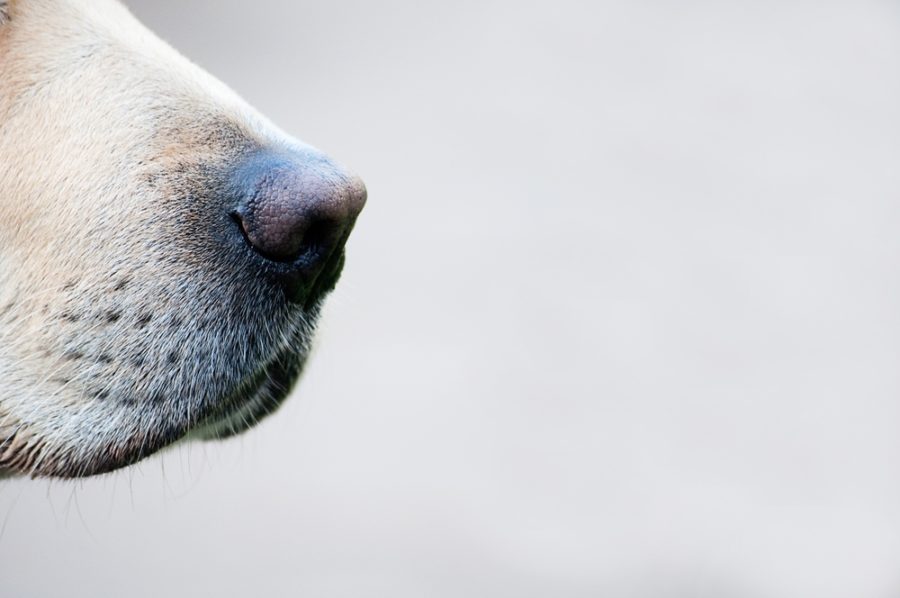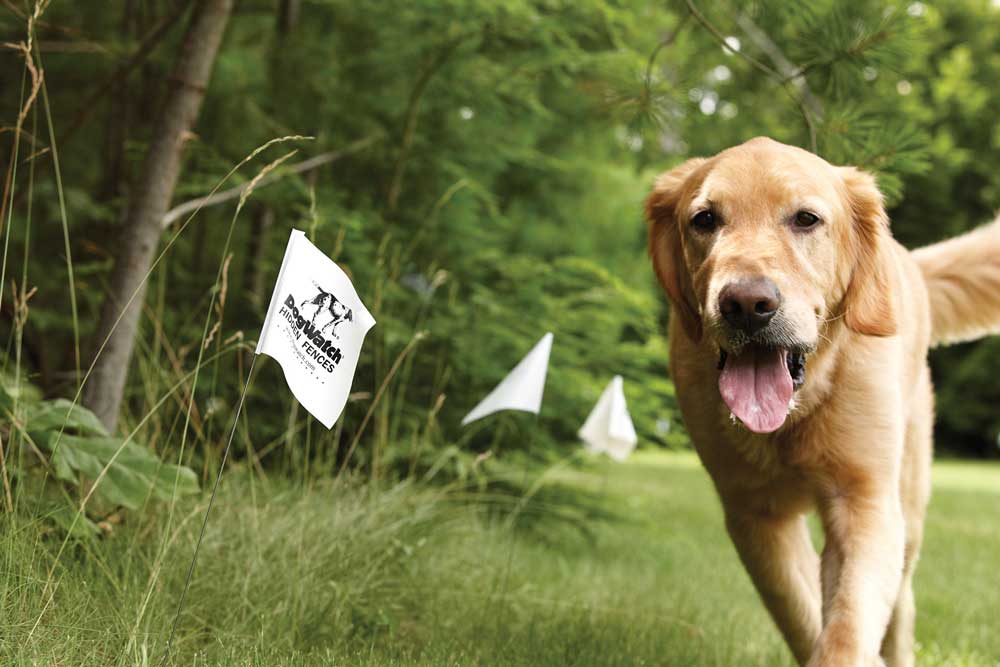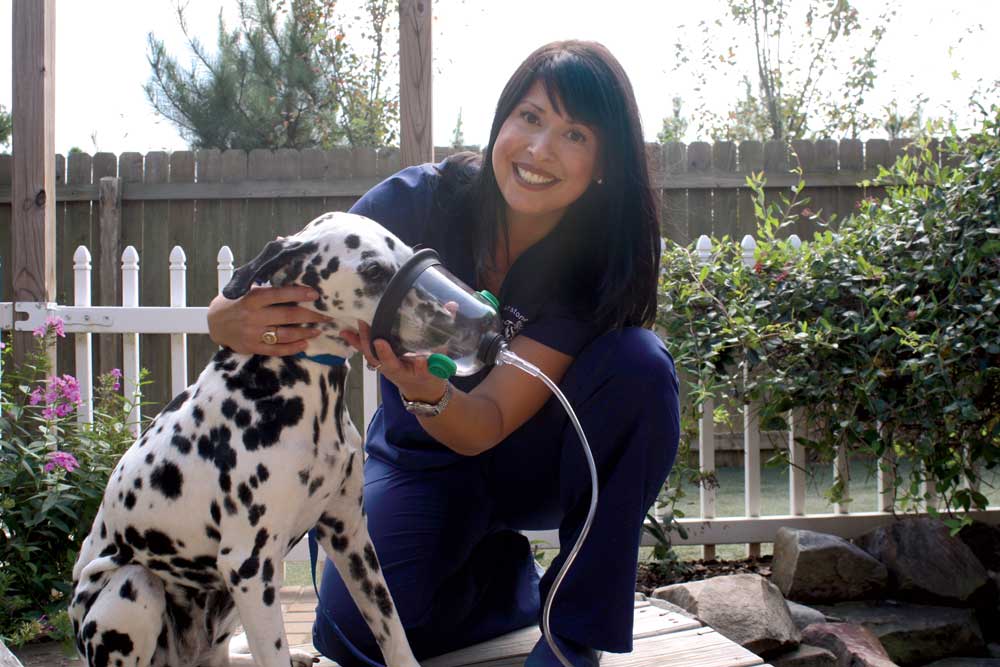Canines are famous for their powerful sense of smell. A new study is showing that detection dogs can even be used to sniff out one of the most insidious of human diseases – ovarian cancer.
It’s common knowledge that dogs, bears and other animals can detect odors well beyond human limitations. The German shepherd, Labrador retriever and bloodhound are just a few breeds that come to mind when we think of detection dogs. But it doesn’t stop there. Veterinary research indicates that cancer detection may be yet another positive outcome of the powerful canine sense of smell.
A nose for cancer
According to the University of Pennsylvania, ovarian cancer is the fifth leading cause of cancer-related deaths in women in the US. If diagnosed early, there is a five-year survival rate of more than 90%. But an effective screening strategy does not yet exist for its detection, because early stage ovarian cancer symptoms can be vague, misleading, and difficult to diagnose. More than 60% of patients diagnosed with this disease have a poor prognosis because the cancer has typically spread to the lymph nodes or other areas of the body before being found.
But there’s good news. The University Of Pennsylvania School Of Veterinary Medicine’s Working Dog Center, along with the university’s physics department, its division of gynecologic oncology, and the Monell Chemical Senses Center, are working together to study the detection of ovarian cancer by both dogs and e-sensors.
The research reveals that odorants can be detected by both dogs and electronic devices in women with the earliest stages of ovarian cancer. Tissue and blood samples from healthy patients, and from those with ovarian cancer, are being collected by Penn Medicine’s Division of Gynecologic Oncology and shared with the Working Dog Center.
“These odorants have been a relatively untapped source for cancer detection information,” says veterinarian Dr. Cynthia Otto, Director of the Working Dog Center and Associate Professor of Critical Care at Penn Vet. “By utilizing the acute sense of smell in detection dogs, in conjunction with chemical and nanotechnology methods, we hope to develop a new system of screening for ovarian cancer using an analysis of odorants to facilitate early detection and help decrease future cancer deaths.”
Three canine testers
Currently, there are three dogs involved in the ovarian cancer detection work – a springer spaniel, a German shepherd and a Labrador retriever. Dr. Otto says these breeds were chosen because of their hunting and scenting abilities, as well as their quieter temperaments. “We are currently training the dogs with actual tissue samples, and once they are completely reliable, we will then introduce blood samples,” she explains. “We will work with [a chemist] to narrow down what components of the blood samples are unique to ovarian cancer.”
Here’s how the training is being done. The three dogs, which live with foster families, come to the Center on Monday through Friday to train. They are dropped off each morning and picked up in the evening. The training involves not only scent detection but a whole series of obedience, exercise, fitness and socialization tasks for optimizing the health and mental wellness of each dog.
The actual testing involves a series of games in which the dogs are given the opportunity to find a cancer sample (see photo). When they do, they sit, then receive a reward such as a game of tug. “It is all based on positive reinforcement,” Dr. Otto stresses, adding that there’s a need for a quality breeding program to ensure further healthy dogs capable of fulfilling these important tasks
So far, the success rates have been very encouraging. A recently-published ABC News article stated that Ohlin Frank (the Lab) was completing his fourth training session and was detecting ovarian cancer tissue 100% of the time. The researchers intend to bioengineer a nanotechnology sensor — in other words “an electronic nose” — that will be capable of screening healthy blood for the volatile odorant indicative of ovarian cancer.
Giving how insidious ovarian cancer is, this study and the dogs taking part in it could help save the lives of many women. Just more proof that dogs really are our best friends!
More doggy detectives
• The Medical Detection Dogs organization based out of the UK works in partnership with researchers and universities by providing dogs renowned for their sense of smell. Just like the Penn Vet Working Dog Center, this organization trains dogs to detect the volatile odorants associated with cancer.
• Medical Alert Dogs are another part of the program. These detection dogs assist individuals who have to manage complex medical conditions on a daily basis. For people living with diabetes, for example, the dogs are taught to identify odor changes associated with certain medical events. Once trained, the dogs can detect blood sugar levels outside the normal range and warn patients or get help before symptoms are experience. These dogs can also be trained to bring any necessary emergency medical supplies, such as glucose and blood testing kits, to their people.







